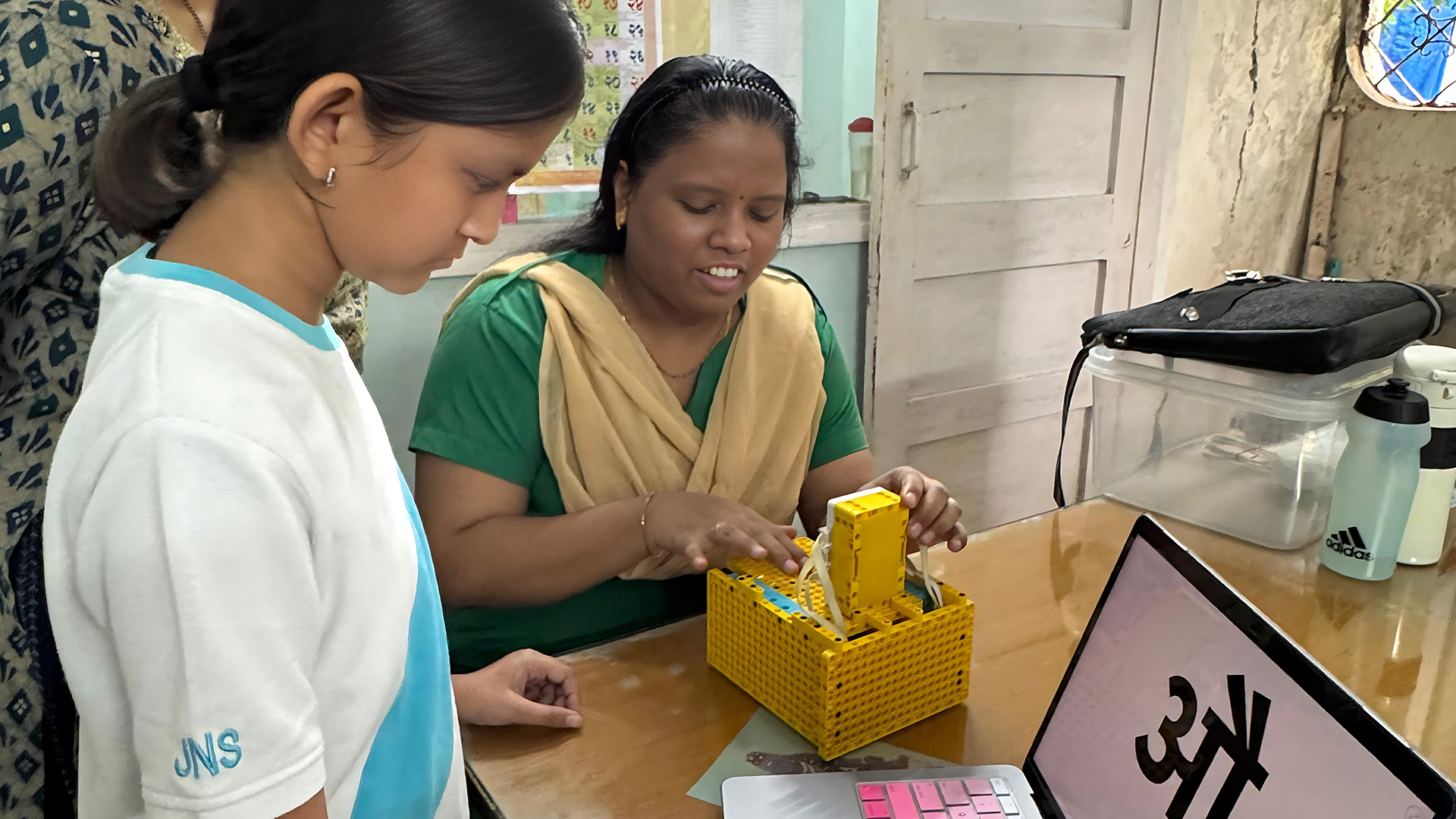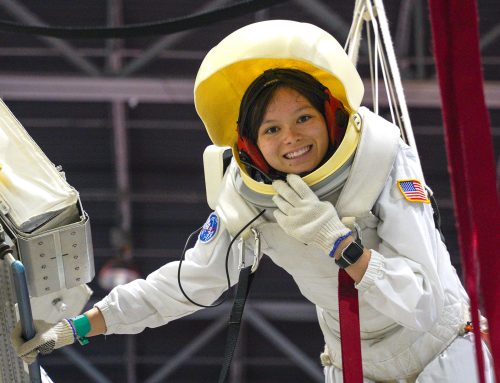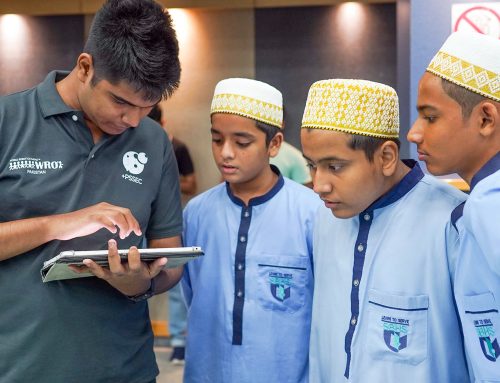We’re sharing stories from our global community. Real accounts of how robotics and WRO® have helped shape the lives of students, coaches, and mentors. This is one of them: the story of Vivaan (10) and Tvisha (12), who visited blind schools in Mumbai and built a machine that helps children learn Braille more independently.
When 10-year-old Vivaan Vaibhav Shah and 12-year-old Tvisha Shrenik Shah teamed up for WRO®, they wanted their project to be more than just a flashy robot. They wanted it to make a real difference in their community.
“We wanted to make machines that could actually help visually impaired children in education,” says Tvisha. “That is their main problem.”
Their solution became Braillence: a set of three machines that help children learn Braille more independently. One teaches the alphabet with raised axles, sound, and a display for teachers. Another lets students test themselves, and a third uses QR codes on simple blocks, turning them into words the machine can read aloud and display in Braille.
Visiting blind schools
Together with their coach Kunal Sadarangani, they spent months on the project. First discussing what to build, then visiting blind schools in Mumbai to understand how they learn. A key problem was that students need a teacher to show them every letter. So the team wanted to build a machine that helps children learn Braille more independently.
When students pointed out that some buttons were too hard to feel, the team changed the design. They even coded new alphabets in Marathi and Hindi after students requested it. For Vivaan, the goal was always clear:
“Robots can be tiny, but they can still help somebody make their life better.”
Learning Braille themselves
Learning Braille became part of the process. Both Tvisha and Vivaan can now read basic Braille, and they tested their machine against each other in friendly competitions – eyes closed, of course.
“At first, we thought Braille must be easy, that you just have to memorize things, like we do in our exams,” Vivaan says. “But now we know it’s really hard to feel it with just your fingers.”
The reaction that mattered
Winning both the regional and national rounds was exciting, but what the kids are proudest of is the reaction from their testers.
“Like how the children at both the schools we went to liked our machines,” says Tvisha. “That was really good.”
Vivaan explains that a lot of visually impaired children quit learning Braille because it’s too hard or because they don’t have teachers to help them:
“We thought our machine could help and it does. They used it with so much enthusiasm.”
Looking ahead
Now that Tvisha and Vivaan know Braille, they want to volunteer as Braille teachers. But they also dream of scaling from prototype to product so their machine can make Braille learning faster, easier, and more accessible in communities with limited resources.
“We can actually use these in schools,” says Tvisha.
Vivaan adds: “And we can also give them to the government or distribute to rural areas that don’t have much access to education.”
Team Braillence is ready for the WRO International Final in Singapore. But win or lose, they’ve already proven something important: you can solve big problems even at just 10 and 12 years old.
Team Braillence profile:
Names and age: Vivaan Vaibhav Shah (10) & Tvisha Shah (12).
Role in WRO: Participants in Future Innovators Elementary, national winners India, competing at the international final in Singapore Nov 2025.
School: Primary school students at Jamnabai Narsee School, Mumbai.
Standout: Not only did they build a Braille-learning machine that makes it possible for visually impaired to learn without someone guiding every step – Vivaan and Tvisha also learned Braille themselves and now plan to volunteer at a local blind school.







